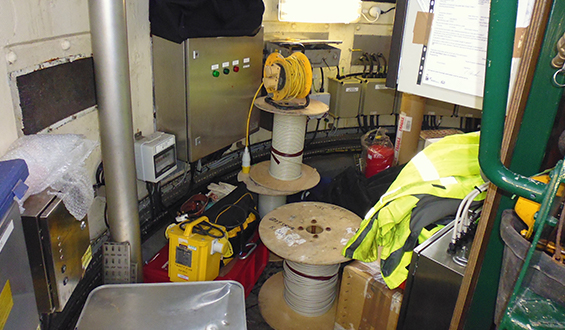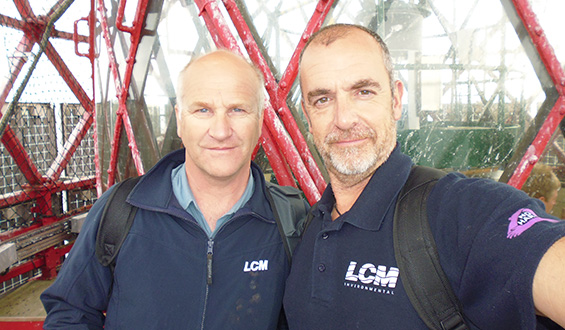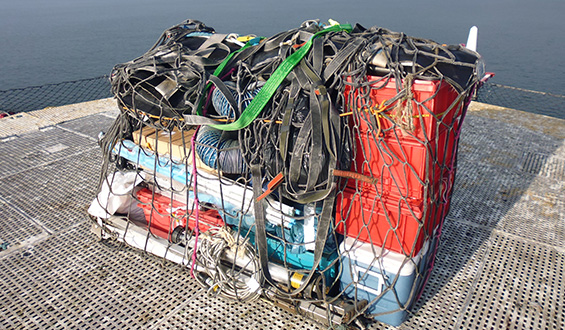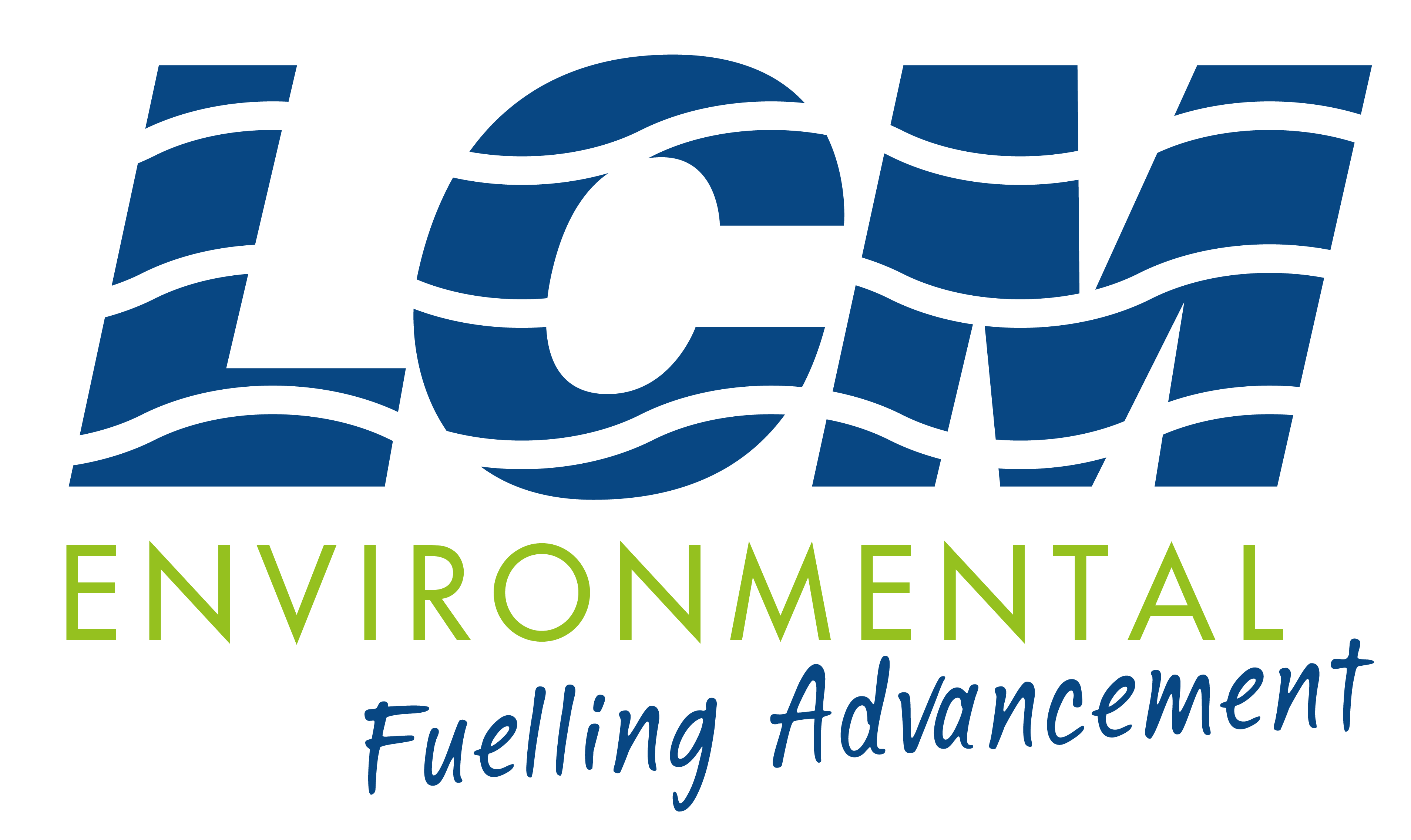The Brief
LCM have been carrying out fuel storage tank cleaning and relining projects since 1987. In that time we have worked throughout the UK, Ireland and Europe. Even undertaking projects in the Ascension islands.
Last year we were asked to assist Trinity House convert the old diesel storage tanks on Eddystone Lighthouse for water storage.
Eddystone lighthouse was first commissioned as Winstanley’s Tower between 1696-1703 when England was at war with France, the eccentric owner and builder Henry Winstanley was even captured by France during its construction but was later released by Louis XIV, stating that ‘France was at war with England not with humanity’.
The next tower to be established was Rudyerd’s Tower built in 1709 by a Captain Lovett who acquired the lease for 99 years and as part of an Act of Parliament, opened one of the first toll charging lighthouses in the World charging each vessel 1d per ton both inward and outward.
This lighthouse tower stood for 46 years and on the night of 2nd December 1755 the top lantern caught fire and all attempts to extinguish the flames failed, the lighthouse burnt for five days and one of the two lighthouse keepers, Henry Hall age 94, died from swallowing lead during his efforts to put the fire out.
Following 52 years of light, marinas were anxious to have the lighthouse replaced as soon as possible and in 1756 work began on the third tower, Smeaton’s Tower which was commissioned in 1759 and stood until 1882 where it was dismantled when cracks were discovered in it’s foundations. As a monument to the original builders the tower was reassembled on Plymouth Hoe at the direction of Plymouth’s Mayor, Charles F. Burnard. Charles is a distant relative of LCM’s Managing Director Bob Burnard and his son, LCM’s Corporate Development Manager, Lloyd Burnard. Charles Burnard also laid the foundation stone at the Hoe with the remaining stump remaining on the Eddystone Rock.
The Douglass’s Tower replaced the Smeaton Tower in 1882 and remains as the Eddystone Lighthouse. After 284 years of the Eddystone having a manned lighthouse in 1982 the Douglass’s Tower was updated to become a fully automated lighthouse with a helipad. Trinity House now operates the tower from their planning and operations centre in Essex.
As part of the running maintenance and upgrades Trinity House employed LCM to investigate the possibility of converting the old diesel storage tanks at the base of the lighthouse into storing fresh water.
The actual project of tank cleaning and lining is one LCM have undertaken many times before but the remote location and logistical complications meant that this project had to be planned and managed with precision to detail and subject to weather forecasts. Following site visits and meetings with Trinity House the project was planned to start as early as the weather would permit mobilisation with Trinity House providing support with their helicopter and a support maintenance boat.
Undertaking a tank clean and lining inside Diesel tanks requires Breathing Apparatus and a lot of specialist equipment for which LCM would normally carry within specially equipped crew vans or lorries. As most of our kit would have to be lifted out via helicopter LCM’ could only take the bear essentials to limit the amount of lifts required.
LCM Environmental’s scope of works for this project were as follows:
- Mobilise to Eddystone Lighthouse via Helicopter to undertake the cleaning of 2 x 8,000 litre fibreglass lined tanks with a 3 man confined space trained tank cleaning team and equipment
- Aid in multiple Helicopter lifts and drop offs of equipment and men
- Once on the lighthouse transfer equipment from top Helipad to base of lighthouse using external winches and internal stairs
- Set up access equipment, remove tank hatches and gain access into the tanks
- Bottom out any remaining fuel into 25 litre jerry cans
- Jet wash clean tank bases and side walls
- Uplift all washings and store in 25 litre jerry cans
- Re-clean tank with HD detergent and rinse, uplifting washings into 25 litre jerry cans
- Issue gas free certificate and tank cleaning certificate on completion
- Re-line tank with suitable hard wearing epoxy liner
- Make safe all waste and equipment ready for transportation via Helicopter
- Transfer all waste and equipment from the lighthouse base to the helipad
- Transport all waste and equipment back to the main land and off load
- Collect all waste and washings from helicopter off load point and dispose of via licensed facilities
The project took 9 days to complete with our team staying on the lighthouse throughout having taken all the supplies they would require whilst on station.
LCM’s Site Manager, Andrew Murch, was on site throughout and in charge of the project;
‘Although the project was a unique one to undertake due to the location of the site and tanks it is was a standard tank clean and lining, all be it rather cramped. What made it so special were the methods we had to undertake to ensure we had all the right equipment with us from the start and that the equipment was stripped to the bear essentials to enable us to transport it all and ourselves out to the lighthouse in as minimal amount of trips as possible on the Helicopter.’
LCM continues to work for Trinity House in supporting them in maintaining their storage facilities; no matter the location or size of the storage tanks LCM are truly the masters of the sea when it comes to tank cleaning.




Contact Us
If you would like more information about our tank cleaning & maintenance services or want to hire us please click the button below.
